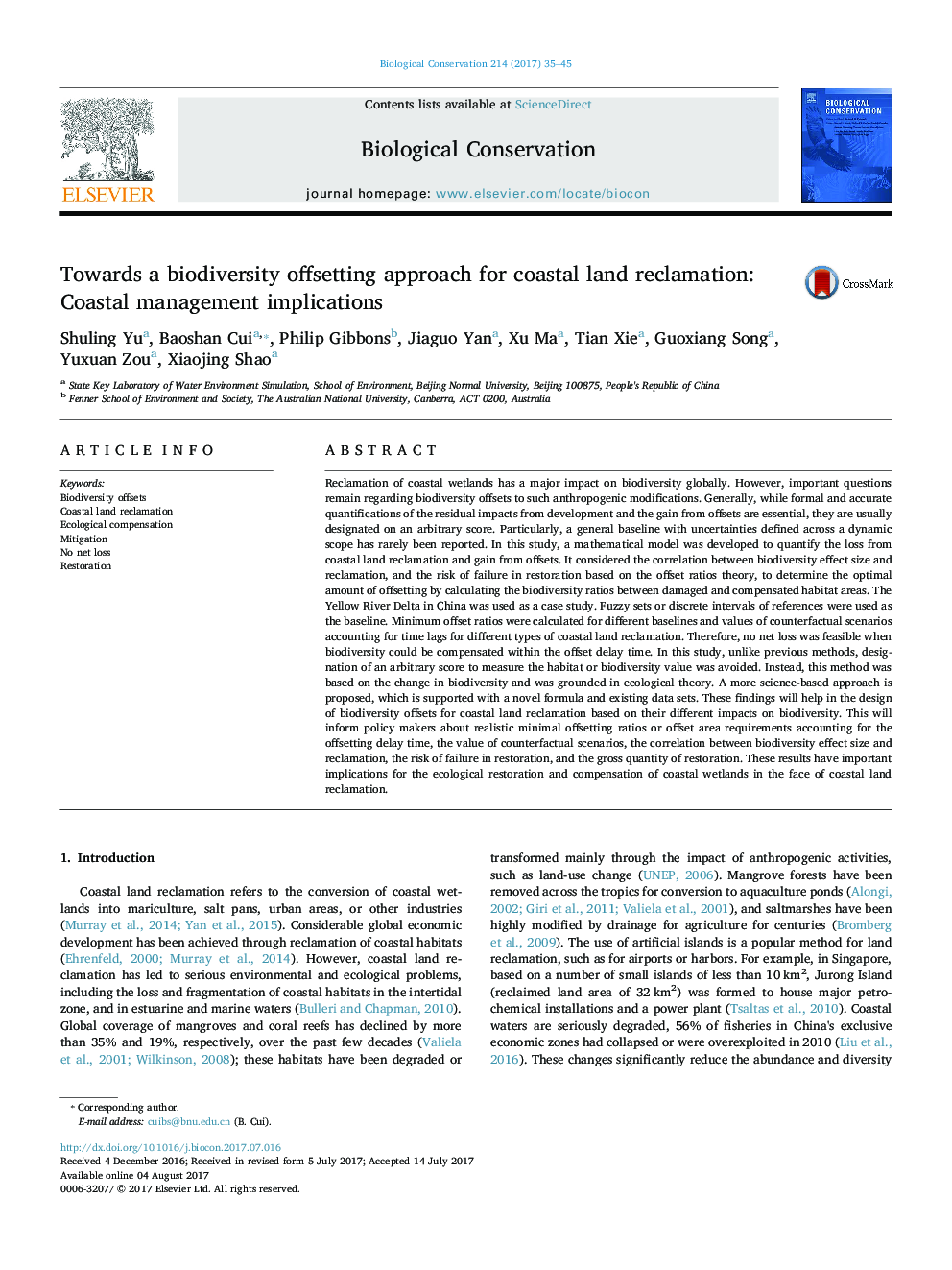| کد مقاله | کد نشریه | سال انتشار | مقاله انگلیسی | نسخه تمام متن |
|---|---|---|---|---|
| 5742932 | 1617891 | 2017 | 11 صفحه PDF | دانلود رایگان |
- Optimal offsetting was determined for different coastal land reclamations.
- Mathematical models were developed to optimize offset ratios calculation.
- Fuzzy sets or discrete intervals were taken to deal with baseline uncertainties.
- Via simulation models, we show flexible offsets to different coastal reclamations.
- Our work provides a means for ecological restoration in offset policy development.
Reclamation of coastal wetlands has a major impact on biodiversity globally. However, important questions remain regarding biodiversity offsets to such anthropogenic modifications. Generally, while formal and accurate quantifications of the residual impacts from development and the gain from offsets are essential, they are usually designated on an arbitrary score. Particularly, a general baseline with uncertainties defined across a dynamic scope has rarely been reported. In this study, a mathematical model was developed to quantify the loss from coastal land reclamation and gain from offsets. It considered the correlation between biodiversity effect size and reclamation, and the risk of failure in restoration based on the offset ratios theory, to determine the optimal amount of offsetting by calculating the biodiversity ratios between damaged and compensated habitat areas. The Yellow River Delta in China was used as a case study. Fuzzy sets or discrete intervals of references were used as the baseline. Minimum offset ratios were calculated for different baselines and values of counterfactual scenarios accounting for time lags for different types of coastal land reclamation. Therefore, no net loss was feasible when biodiversity could be compensated within the offset delay time. In this study, unlike previous methods, designation of an arbitrary score to measure the habitat or biodiversity value was avoided. Instead, this method was based on the change in biodiversity and was grounded in ecological theory. A more science-based approach is proposed, which is supported with a novel formula and existing data sets. These findings will help in the design of biodiversity offsets for coastal land reclamation based on their different impacts on biodiversity. This will inform policy makers about realistic minimal offsetting ratios or offset area requirements accounting for the offsetting delay time, the value of counterfactual scenarios, the correlation between biodiversity effect size and reclamation, the risk of failure in restoration, and the gross quantity of restoration. These results have important implications for the ecological restoration and compensation of coastal wetlands in the face of coastal land reclamation.
Journal: Biological Conservation - Volume 214, October 2017, Pages 35-45
